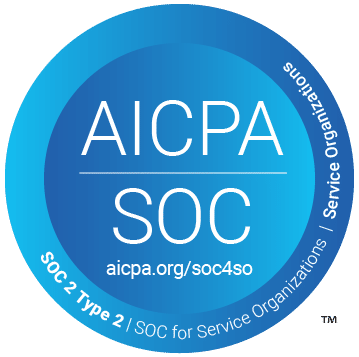
Since 2017, the General Services Agency’s (GSA) Integrated Award Environment program office has been working to consolidate all related procurement tools into a single modernized online environment. The GSA manages federal acquisition and awards processes through 10 different websites which are being merged into one in the new SAM.gov database (SAM).
Under the original GSA timeline, the SAM.gov database was to be fully integrated into the beta.SAM.gov environment in April 2021. However, that timeline has slipped a bit. A recent memo issued by the GSA outlined a multi-step transition:
- Phase one, scheduled for April 26, 2021, will change the look and feel of beta.SAM.gov to prepare for the SAM.gov merge that will happen a few weeks later.
- Phase two, scheduled for May 24, 2021, will migrate the functionality of SAM.gov into beta.SAM.gov (keeping the new design). The term “beta” will be retired and there will be only one SAM.gov.
Since the SAM and the OIG’s List of Excluded and Ineligible Entities (LEIE) databases are critical resources for assuring that vendors and providers are not excluded from payment directly or indirectly from federal programs, there was quite a bit of interest and concern among federal contractors who regularly use the SAM database.
This article explores the evolution of the GSA’s vendor databases, starting with EPLS in 2007, to SAM.gov in 2012 to the newest version of SAM.gov in 2021.
What was A EPLS Background Check?
While SAM EPLS, is maintained by the General Services Administration, The EPLS verification database was established in 2007 by the U.S. General Services Administration (GSA) to allow federal agencies to check that potential vendors are eligible for federal contracts. The EPLS database facilitated review to determine if vendors were suspended, debarred, or otherwise disqualified from federal contracts or receiving federal funds through programs like Medicaid which required EPLS screenings of the database. Once a company or individual is on the EPLS verification list, the federal government or any company that holds or seeks a federal contract cannot utilize the services of a GSA excluded/sanctioned/debarred company or individual.
By way EPLS background check: GSA operated the EPLS search through funding from 24 federal agencies to support the Integrated Acquisition Environment (IAE), a bundle of services established to streamline the federal government acquisition process. Agencies were required to report excluded parties by entering information directly into the EPLS database within 5 working days after the exclusion becomes effective. When a business is excluded, the action extends to all its divisions and organizational units, as well as specifically named affiliates.
Why EPLS Was Replaced by the SAM
In 2009, the US Government Accountability Office investigated the accuracy and usefulness of the EPLS search after receiving reports of vendors with federal contracts who were supposed to be excluded. The GSA’s report issued after the investigation concluded that most of the improper awards and payments identified were attributable to ineffective management of the EPLS database or to control weaknesses at both excluding and procuring agencies. The report found that a number of suppliers who had been excluded for offenses like national security violations and tax fraud were still receiving funding for a number of reasons, such as:
> Some businesses and individuals were able to circumvent the terms of their exclusions by operating under different identities.
> No single agency was responsible for proactively monitoring the content and function of the database.
> Agencies exhibited inconsistency in conducting EPLS search records prior to contracting or inputting timely or accurate data related to excluded parties
> EPLS entries were incomplete, with insufficient search capabilities and missing points of contact.
The report recommended that the GSA manage the database better and strengthen controls over it. Because of these recommendations and other reasons, the GSA decided to streamline and consolidate several vendor databases, including the EPLS, the Central Contractor Registration/Federal Agency Registration (CCR/FedReg) database, and the Online Representations and Certifications Application (ORCA) database. They named the new database the System for Award Management, or SAM. On November 21, 2012, the EPLS was replaced by the SAM.
Differences Between the EPLS and the SAM
The SAM database has all of the information that was previously in the EPLS, but there are some differences in how that information is organized, sorted which effects how an EPLS search is conducted. Similar to SAM, EPLS only publicly displays the city, state, and zip code; however, some of the terminology is different.
Also, the SAM’s “Quick Guide for Changes From the EPLS” noted several major differences:
> Exclusion Types instead of Cause and Treatment (CT) codes. EPLS verification used CT codes to indicate the entity’s exclusion status. There were over 70 of these codes that indicated, for example, whether an entity was suspended, debarred, convicted, pending investigation, voluntarily excluded or some other status. A federal working group responsible for shaping the SAM decided it would be simpler and more efficient to consolidate these into four Exclusion Types.
> New Exclusion Categories. In the SAM, excluded entities fall into one of four categories called “Classification Types.” The four Classification Types are:
• Firm: a company with a valid DUNS number
• Individual: a person without a DUNS number
• Vessel: a mode of transportation capable of transportation by water
• Special Entity Designation: any organization that cannot be considered a firm, individual or vessel. This category was called “Entity” in the EPLS.
For each of these categories, the SAM gives both the “Nature” and “Effect” of the exclusion. “Nature” gives the reason for the exclusion and “Effect” gives guidance for organizations and contracting officers about what federal funding the excluded entity can and cannot receive.
SAM and beta.SAM
As indicated above, the new SAM site was intended to integrate 10 different procurement tools into a single online environment for the benefit of both agencies and industry users of the new tool. The GSA beta.SAM.gov website indicates that beta.SAM.gov database will incorporate all of the SAM EPLS functions. However, there have been substantial industry concerns with the new version, as captured in a February 2020 letter from the Professional Services Council to the GSA. Several categories of concern with the new system were identified:
> access challenges
> search parameters
> the capability to receive contract information
> difficulties in how the site displays information
GSA has acknowledged that there remains room for improvement of beta.sam.gov. The GSA continues to improve the site based on industry and agency feedback. However there remain concerns that user requests have gone unanswered and that the rollout was rushed. Other users of the beta.sam.gov attribute the frustrations to the fact that change is hard for some.
CONCLUSION
As the new SAM site moves through the upcoming transition steps toward full deployment in May of 2021, there will undoubtedly be challenges both for the GSA to meet industry needs and for users to become familiar with the new platform. However, there remains a clear expectation of government contractors to search the SAM (and LEIE) databases prior to contracting for services with third parties. Streamline Verify maintains its ability to search the SAM and LEIE databases through this transition to assure that clients meet their obligations to contract responsibly.



































